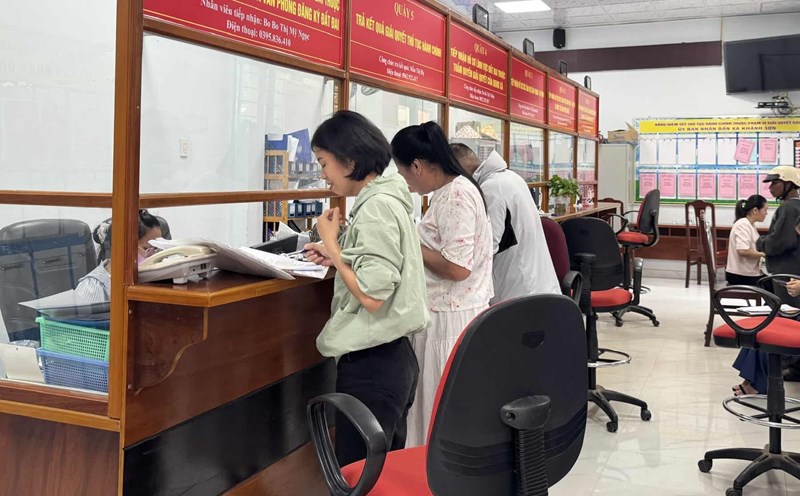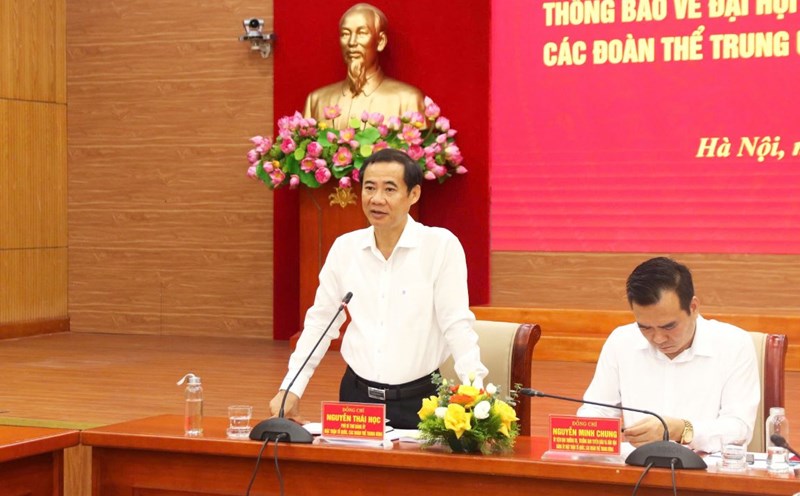
Who uses it, that person evaluates
Speaking with Lao Dong, Dr. Doan Van Tinh - Deputy Head of the Faculty of Human Resources Management at the Academy of Public Administration and Management, member of the Vietnam Association of Administrative Sciences, assessed: This draft Decree has demonstrated a remarkable innovative approach. Evaluation criteria combine determination and quantity, along with multidimensional feedback. The focus is shifted strongly to results and performance, taking KPI (Key Performance indicator) as the foundation. The assessment is no longer concentrated at the end of the year but is implemented in many cycles, recorded and feedback is regular, helping to monitor progress, make timely adjustments...
However, Dr. Doan Van Tinh also pointed out some points that need to be refined to ensure feasibility. First, the comprehensive mindset of "assessing civil servants" sometimes leads to dispersation, not focusing on key indicators, causing the system to lack focus on performance and output results. Second, regulations on "standard products/works" and "exchange" methods are still complicated, posing a risk of abuse and making it difficult to implement synchronously in practice...
Dr. Tran Anh Tuan - Chairman of the Vietnam Association of Administrative Sciences, former Deputy Minister of Home Affairs - said that regarding the authority to evaluate, it should follow the motto: "Who uses it, that person evaluates". If the person assigning the task is truly impartial and objective, he or she will be the one who evaluates most correctly and accurately.
Regarding the tool, the former Deputy Minister of Home Affairs said that there are currently three tools that can be used for assessment, including: 360-degree Response, OKR ( Objective and Key Results) and KPI (Key Performance indicator).
In which, 360-degree feedback is used to apply generally to civil servants in leadership, management and civil servants in implementation and enforcement. This is a tool to help listen to feedback from superiors, subordinates, colleagues, and people about an individual in the process of performing tasks and public duties. These feedback reviews from different perspectives and aspects should be used to evaluate general, determinative contents and criteria.
As for the OKR tool, due to its progress and target results of the organization, it is often applied to leaders and managers. For the implementation and enforcement team, it is advisable to use KPI tools to assess accurately because KPI is associated with basic, core contents of the task such as progress, volume and specific results of each individual.
KPI is not the perfect key
Considering the need to innovate the content and evaluation criteria, Dr. Doan Van Tinh emphasized that KPI is not a "magic wand", a "kill of everything" and "inexorable". We cannot use KPI to comprehensively evaluate, but should focus on some key indicators, qualitative and streamlined assessment. Balance to measure " quantity" and "quality"; consider opportunity costs in measurement" - Dr. Doan Van Tinh shared.
Dr. Tinh said that it is necessary to consider more comprehensively and in many aspects the cases of civil servants holding many leadership and management positions to evaluate at the highest position; if they hold many equivalent positions and positions at the same time, it is necessary to evaluate more work hours in the place each year. At the same time, the regulation on the rate of "Excellent completion of tasks" among the total number of civil servants at the same agency, organization, unit and each group of subjects with similar tasks should be consistent with the rate of party members classified as "Excellent completion of tasks" according to the Party's regulations.
In addition, it is necessary to have more specific regulations on the development and assignment of KPI indexes, and to decentralize them stronger and more clearly to heads of agencies and units that employ civil servants. This requires the development of a support toolkit including a handbook, detailed guidance documents, especially on the development of criteria, determination of weights, scale of criteria and a scale conversion system. Along with that is the implementation of in-depth training and fostering programs on KPI for ministries, branches, localities, agencies and units; and investment in technology, enhancing the application of artificial intelligence in assessment and response.











